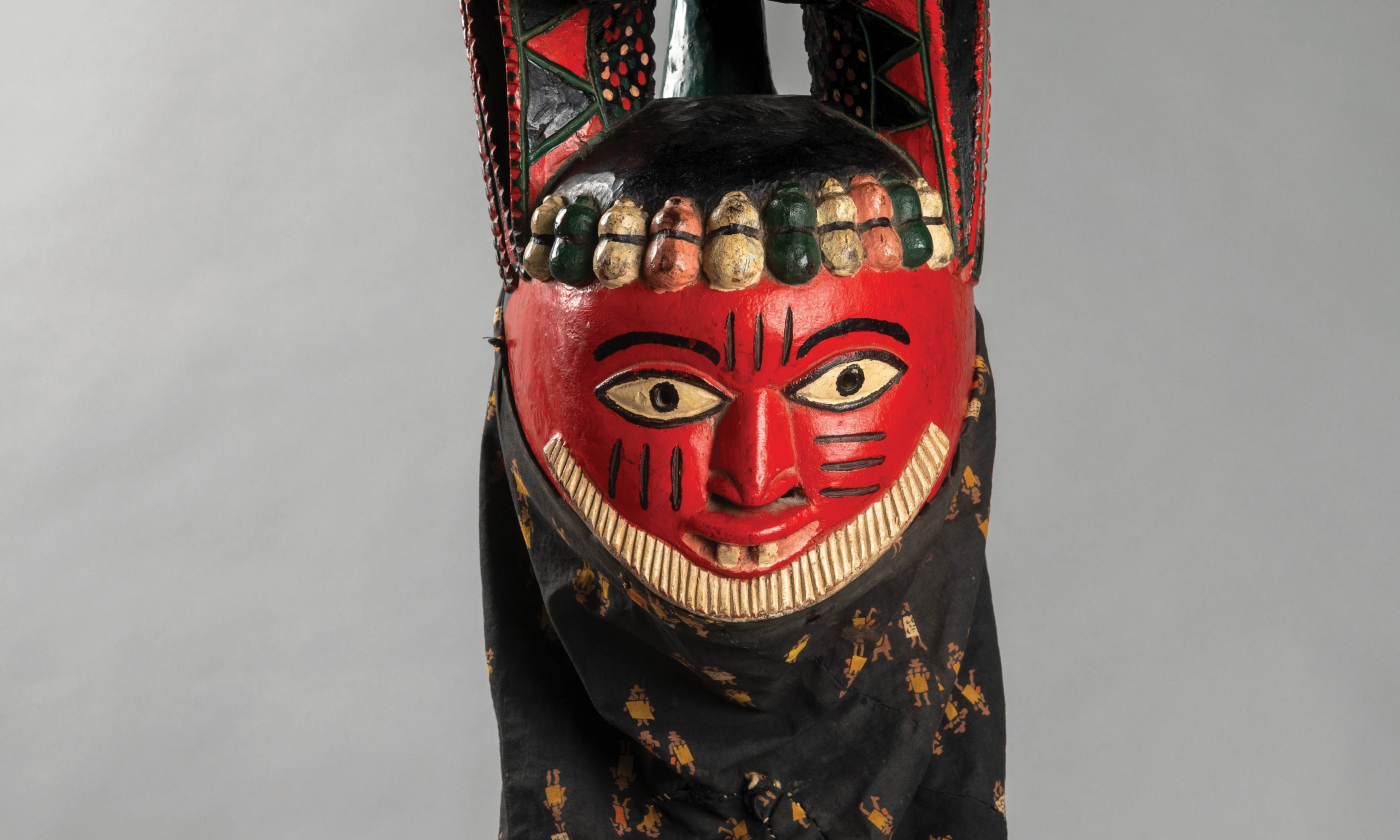This ancestor mask (1970-87) by an unknown Yoruba artist in Nigeria is one of the works on show Photographic Unit, University of Glasgow
As the question of how to display ethnographic objects from world cultures continues to vex many Western museums, one Scottish institution is proposing a creative way forward in an ambitious new exhibition.
The Trembling Museum, which opens this month at the Hunterian Museum and Art Gallery in Glasgow, presents African art, artefacts and textiles from the museum’s permanent collection alongside works by contemporary artists. Objects such as ornately carved musical instruments, ritual garments and household items from Africa will be placed among works by artists such as Jimmy Robert, Ulrike Ottinger, Alberta Whittle and Lubaina Himid, who engage with issues relating to colonial histories in their work.
Based at the University of Glasgow, the Hunterian is Scotland’s oldest public museum and has a rich collection of African art covering 300 years, in part due to acquisitions made by Frank Willett, an anthropologist and expert on African art, who was the museum’s director between 1976 and 1990.
Jimmy Robert's Frammenti V (2022) © Jimmy Robert. Courtesy of the artist, Thomas Dane Gallery, Stigter van Doesburg and Tanya Leighton
“Every time we go into the store, we’re struck by how amazing the objects are,” says Dominic Paterson, the Hunterian’s curator of contemporary art. Co-curating the show with him are: Andy Mills, the museum’s curator of world cultures; Manthia Diawara, a Malian scholar and film-maker; and Terri Geis, an art historian and Diawara’s long-term collaborator.
“The initial impulse for the show was really just: let’s get these things out of boxes and put them on display in an interesting way so the audience can think with us about where they belong, what it means to have them in Glasgow, what they mean together as a group,” Paterson says.
The show poses questions about the ways objects are traditionally classified by museums. “The idea of showing African art as art isn’t new, but in some ways it’s also very provocative because it’s making us think about the categories museums use, about why we distinguish between certain kinds of artistic production,” Paterson says.
He points out that, while the provenance of the objects in the show is not contested, they are “undoubtedly connected with colonial relationships”. Paterson adds: “We’re not saying that we’re comfortable with owning these objects and classifying them. The exhibition is really a staging of that question. It’s a proposal, a proposition, a ‘let’s see what happens if we try this’.”
The show’s title comes from Édouard Glissant, a Martinican writer whose ideas inform the exhibition. “We are interested in Glissant’s idea about a museum bringing world cultures together in different ways, which would treat Western art, for example, as one option amongst all the kinds of cultural production there are. Is there a way in which we need all these histories, all these objects, to reconnect our sense of common humanity?”
• The Trembling Museum, Hunterian Museum, Glasgow, 2 December-19 May 2024

